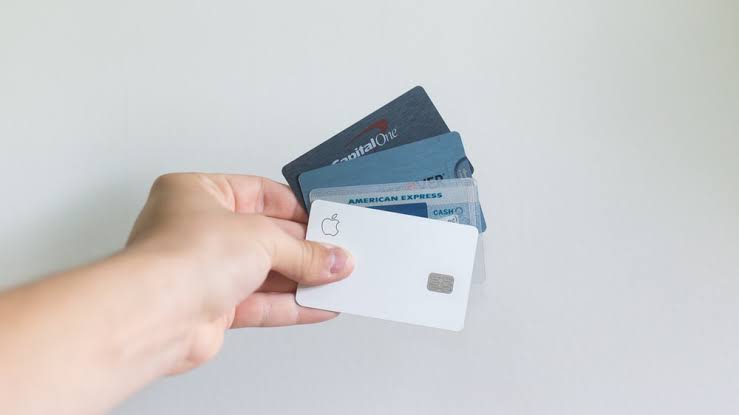Last updated Feb. 10, 2023 by Peter Jakes
Many Americans who didn’t receive their stimulus checks are eligible for the Recovery Rebate Credit. However, many of them do not know how to go about it. This article will explain all you need to know about the Recovery Rebate Credit and how to apply for it.
The Relief, Economic Security (CARES) Act and Coronavirus Aid authorized the recovery rebate credit. This was paid to eligible American citizens through the Economic Impact Payment in 2020. If you did not receive the full amount due to you, you could claim it as a refundable credit when you file your 2021 taxes.
We have also answered many questions regarding the recovery rebate credit in this article, “How to Apply for Your Recovery Rebate Credit in 2022”
You may like this article: how to make the most out of your stimulus check.
What is Recovery Rebate Credit
The recovery rebate credit is a refundable tax credit that can be claimed on your tax return if you did not receive your third stimulus check or received the wrong amount.
Difference Between Stimulus Check and Recovery Rebate Credit
The Recovery Rebate Credit, the first and second rounds of stimulus check payments, are two distinct payments. Recovery Rebate Credit is only available if the IRS did not issue or partially issued your stimulus payment on your federal tax return for the year 2020.
Individuals were paid directly by the federal government for both rounds of stimulus payments. If you are unsure if you received the payment, contact the IRS to verify and review your records with your IRS online account, or use Get My Payment to check your account balance.
Note; You should not file for the Recovery Rebate Credit if the IRS issued your first or second stimulus payment, even if the payment has been lost or missing.
The first and second stimulus payments were based on your 2018 or 2019 tax information. It was only possible to receive the full stimulus payment if your adjusted gross income (AGI) was $75,000 or less ($150,000 for married couples).
Who Were Paid The Initial Stimulus Checks
Single recipients received $1,200, while married couples received $2,400 as their first full stimulus payment. Single Individuals received a total of $600, while married couples received a total of $1,200 for the second stimulus payment.
Part of the first stimulus payment was given to those who earned more than the maximum payment threshold but not more than $99,000 ($198,000 for married couples).
If you have an AGI of $87,000 for individuals and $174,000 for married couples without children, your stimulus payment will be reduced to $0. This maximum amount increased by $12,000 for each additional qualifying child.
There were only “partial” payments made as a result of the IRS cutting stimulus payments by $5 for every $100 earned above the cutoff point.
Requirements for the Recovery Rebate Credit are based on your 2020 federal tax return information and are identical to those applying for the stimulus payments.
So if you were not eligible for the stimulus payment or received a partial payment earlier, you may be eligible when you file your 2021 federal tax return this tax season.
Read also,
What Are Card-Not-Present (CNP) Transactions?
How to Apply For a Portfolio Loan
Who Is Eligible For The Recovery Rebate Credit?
According to the IRS, the majority of people who were eligible for the third round of payments with any essential plus-up payments have already received their stimulus checks. However, there are a few scenarios in which someone may not have received it or may have received the incorrect amount. Here are instances:
You’re claiming a new dependent in 2021 for instance, a child.
If you gave birth or adopted a child this year, you may be able to claim the Recovery Rebate Credit for your new child. To be eligible for the payment, your child must be under the age of 17 by December 31, 2021. Note that children under the age of 17 were eligible for $500 in the first round of stimulus payments and $600 in the second round.
Your marital status changed in 2021.
Your adjusted gross income in 2019 or 2020 was considerable enough to disqualify you from receiving a stimulus check. (Whichever was used by the IRS to calculate the third stimulus amount). However, your 2021 AGI is now lower and within the qualifying threshold.
You did not have a Social Security number but got one before the 2021 tax deadline.
- You lost or reduced your income in 2020.
- Assume you are single and your AGI was $100,000 in both the 2018 and 2019 tax years. However, because you were retrenched for the first few months of the pandemic, your income dropped to $50,000 in 2020.
- Because your income has fallen below the $75,000 threshold for single individuals, you may be eligible to claim the Recovery Rebate Credit to receive the funds you did not receive as a direct payment.
-
Change from a dependent or college student in 2018 and 2019 to an independent in 2020:

If you are a 20-year-old college student who was alleged to be dependent on your parents’ 2018 and 2019 tax returns because you were initially ineligible for the stimulus payment, you may now be eligible for the credit if you plan to file your tax return for the 2020 tax year.
How to Know if I qualify for Recovery Rebate Credit
To find out if you qualify for the Recovery Rebate Credit, start by filing your taxes. Economic Impact Payments are based on your taxable income and this is for your 2018 and 2019 returns. Your income must be less than the payment threshold to qualify for a Recovery Rebate Credit in 2021. Your adjusted gross income (AGI) could not, in particular, exceed:
- $150,000 if married filing jointly, or as a qualifying widow or widower.
- $112,500 if filing as head of household
- $75,000 for eligible individuals filing under any other filing status.
The IRS recently released updated information on the Recovery Rebate Credit, which people can use this year to recoup any money owed to them from one-time payments.
The American Rescue Plan Act authorized the third round of stimulus payments last year.
Check out these Best Personal Loans with Low Interest
How Do I Claim The Recovery Rebate Credit?
To determine the difference in the amounts received, first compare the amount you received for the third stimulus check to the amount you were eligible for based on your 2021 tax information. If you can’t remember how much you received, you can look at what the IRS has on file for you:
- Accurate IRS online account.
- Request an IRS transcript.
- Review Notice 1444-C (sent after the earlier disbursal of the third stimulus payment) & Letter 6475 (sent in early 2022).
These physical IRS notices were mailed to the address on file for each taxpayer who received a stimulus payment, and they include the total amount disbursed.
After crunching the numbers, if you believe you are eligible for the recovery rebate credit, claim it on line 30 of Form 1040 on your 2021 return.
Additionally, Page 59 of the Form 1040 instructions includes a worksheet to help you calculate how much to claim, and many quality tax-prep software programs will assist you in claiming the credit if you are eligible.
You can also use a Tax Software
Reminder: If you want to split your refund for deposit into more than one account or buy a U.S. Savings Bond, fill out direct deposit information on lines 35b-35d or check the box on line 35a and complete Form 8888.
Direct deposit is the most secure and time-efficient method of receiving your refund. If you do not select direct deposit, you will receive a paper check in the mail.
Free tax return preparation is also available for those who qualify.
How to Use the IRS Free File to Claim Your Recovery Rebate Credit
The IRS Free File online service is specifically useful for those who don’t have a tax filing obligation and whose taxable income falls below a certain threshold. If a single person’s income is less than $12,550 and they have no other special filing issues, they’ll have no filing obligation.
To claim the 2021 Recovery Rebate Credit, eligible individuals who did not receive a third Economic Impact Payment or received less than the full amount must file a 2021 tax return, even if they do not normally file a tax return.
If you don’t have a computer, you can use your smartphone to access the IRS free file and file your tax return.
Tax Filing Steps
If you don’t have a 2021 tax filing requirement and file in 2022, follow these steps:
- 1. Go to IRS.gov/freefile.
- 2. Select the “Choose an IRS Free File Offer” blue button.
- 3. Select “Browse all offers” and check for a product with a zero income requirement.
- 4. Select your most preferred product, then you will be automatically redirected to the company’s website.
- 5. To complete your tax return, answer the product questions and accurately report your taxable income, if any.
- 6. If you have no taxable income, simply respond to all the questions, including those asking for information required to calculate the 2021 Recovery Rebate Credit.
- 7. Complete the refund information, sign the tax return electronically, and file the tax return online.
See our review of the Best Tax software for filing your tax returns.
Individuals who are exempted from filing taxes can use IRS Free File to qualify for additional tax benefits, such as the Earned Income Tax Credit (EITC). The IRS free file employs simple interview-based software products to guide you through the tax filing process. It also ensures you receive all the tax benefits you are entitled to.
Don’t miss this article, What are IRS Penalties for Late Filing and Payment of Federal Taxes
Recovery Rebate Credit Frequently Asked Questions

Is my Recovery Rebate Credit Taxable?
It’s important that you know that your stimulus payment is not taxable. According to the Internal Revenue Service, you are not required to include the amount in your gross income or pay taxes on the payments.
Although the IRS has issued guidance stating that stimulus payments are not taxable, the majority of Americans are still unaware of how stimulus payments will impact their taxes.
Is the Recovery Rebate Credit Refundable?
The Recovery Rebate Credit is also a refundable credit, which implies this can decrease the amount of taxes you owe on your 2020 tax return or provide you with a refund. You are not required to repay the stimulus payment if you received it on your 2018 or 2019 tax return. Furthermore, you no longer qualify for the refund on your 2020 and 2021 tax returns.
How do I file for my recovery rebate credit?
You must have filed your 2020/2021 tax return. Enter the amount of the Recovery Rebate Credit (stimulus payment) that you did not receive. If you have any questions, please visit the IRS website: IRS Recovery Rebate FAQs.
Can someone help me file for the Recovery Rebate Credit?
Legal Aid has a list of programs offering free tax prep help. In addition, if your annual income is $72,000 or less, you can file online for free under the IRS Free File Program.
How does the IRS figure out if I’m eligible for a payment?
The Recovery Rebate Credit is dependent on how much money you will make in 2020. Even if you weren’t qualified (or received a reduced amount) based on your 2019-2021 income, you may be eligible for the credit. Or additional payment if your income was lower in 2019 than it was in 2020.
To the extent that you received stimulus funds based on your lower 2020 income, you don’t have to pay back any money.
Check out these Survey: Half of Americans Don’t Have $250 to Spare (And Why You Should Learn to Save)
Am I required to include all my income while filing for Recovery Rebate Credit?
Yes, you may be entitled to additional tax credits if you have earned money and disclose all of it on your tax return together with information about a spouse or dependents.
Electronic filing of your 2021 tax return is the quickest and most accurate method. IRS Free File allows taxpayers with incomes of $73,000 or less to prepare and file their federal tax returns electronically for free using reputable software.
Electronic filing is also possible with commercial tax preparation software. The tax preparation software will inquire about your income, credits, and deductions and assist you in calculating your 2021 Recovery Rebate Credit and any other applicable credits.
Were there other common problems in obtaining payments? What can I do to correct them?
Yes. Some adults did not receive benefits since a relative claimed them as a dependent on their 2020 tax return. Some parents did not get child support payments because another taxpayer identified the same child as a dependent on their 2020 tax return.
The most effective solution is to file a tax return for 2021 and claim the Recovery Rebate Credit. The IRS will consider current information rather than 2019 information, which could mean you are eligible for a refund.
I don’t always file taxes. What else should I know?
Additionally, you can claim additional money from your tax return. The Earned Income Tax Credit and/or the Child Tax Credit may be available if you earned less than $12,400 in 2020 and had work income. ($18,650 for a single person and $24,800 for a married couple filing jointly).
These “refundable” credits, like the Recovery Rebate Credit, are paid even if you don’t owe any taxes. Don’t get caught up with the penalties for late filing.

What is the fastest way to file for Recovery Rebate Credit?
Filing electronically and having it direct deposited, contactless and free, into your financial account is the quickest way to collect your tax refund. You can have your refund transferred directly into your bank account, prepaid debit card, or mobile app, but you must supply your routing and account numbers.
If you did not receive the full amounts of the first and second Economic Impact Payments, you may be eligible to claim the 2020 Recovery Rebate Credit.
To do so, you must file a 2020 tax return, even if you do not normally file taxes. On your 2021 return, DO NOT include any information about the first and second Economic Impact Payments or the 2020 Recovery Rebate Credit.
Where do I find my AGI information?
When preparing your taxes and filing them online, you must sign and confirm your electronic tax return by providing your prior-year AGI or Self-Select PIN.
If you utilized the Non-Filers tool successfully last year to register for an advance Child Tax Credit payment or a 2020 Recovery Rebate Credit, enter “$1” as the prior-year AGI verification.
If you did not use the Non-Filers tool last year and did not file a 2020 Form 1040 or Form 1040-SR electronically or on paper, you should enter “$0” as the prior-year AGI verification.
Enter the AGI amount from line 11 of the submitted 2020 Form 1040 or Form 1040-SR as the prior-year AGI verification if you filed an electronic or paper 2020 Form 1040 or Form 1040-SR.







![How To Correct A Mistake On A Money Order [Process Explained]](https://paypant.com/wp-content/uploads/2024/06/How-To-Correct-A-Mistake-On-A-Money-Order-Process-768x512.jpg)

